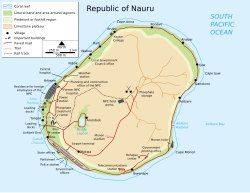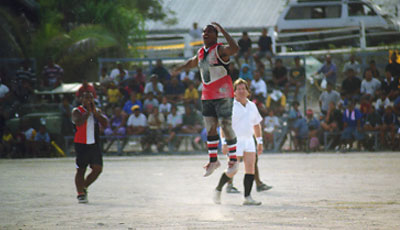 | |
 Interactive map of Linkbelt Oval | |
| Location | Aiwo, Nauru |
|---|---|
| Owner | Government of Nauru |
| Operator | Nauru Australian Football Association |
| Surface | Gravel |
| Construction | |
| Broke ground | 1924 |
| Built | 1924 |
| Opened | 1924 |
| Tenants | |
| Nauru Australian Football Association | |
Linkbelt Oval is a stadium on the island nation of Nauru. It is located in Aiwo and was constructed by the Nauru Phosphate Corporation. It is also called the Aida Oval, because Aida, one of the athletic organizations in Nauru, holds its competitions and trainings here. 1,000-capacity Denig Stadium, which hosted games of soccer, [1] used to be another main sports venue in Nauru.


